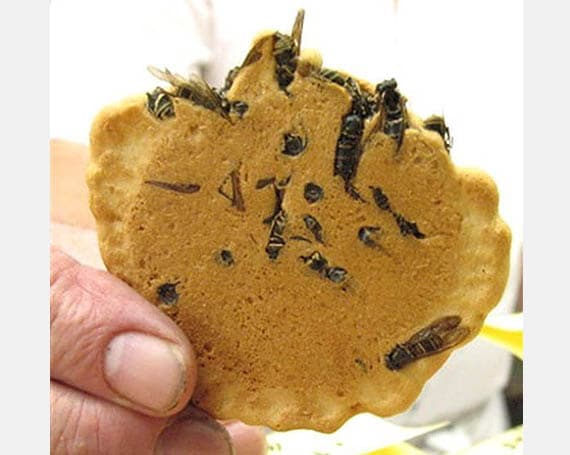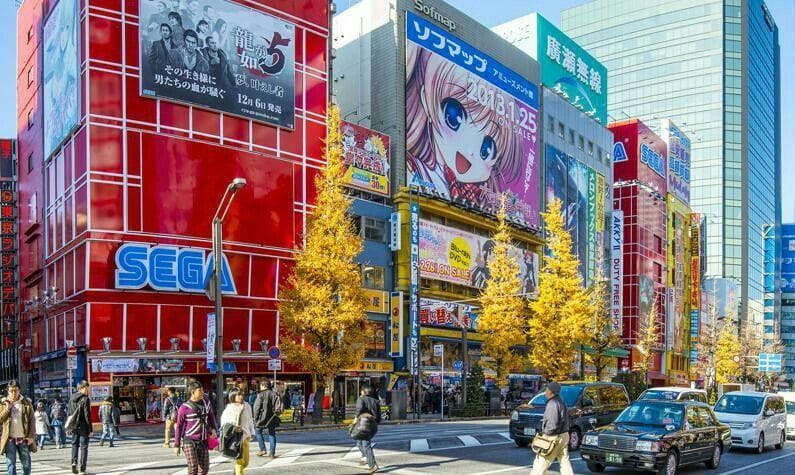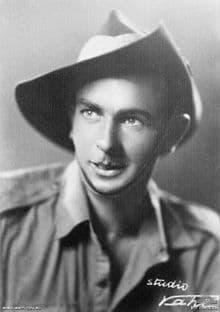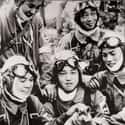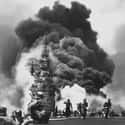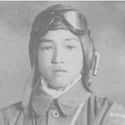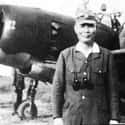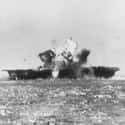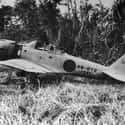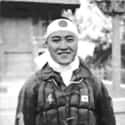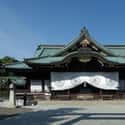-
(#1) All Kamikaze Pilots Were Volunteers, But Not Really
While some kamikaze pilots certainly did enthusiastically volunteer, this was not always the case. Potential kamikaze pilots were given a slip of paper with three options; volunteer willingly, simply volunteer, or don't volunteer. As these papers had the pilots' names on them, they very rarely said no.
The pressure to volunteer was intense. Japanese military dictum at the time was essentially death before surrender, and indeed it wasn't only the kamikaze who took this dictum literally. Japanese soldiers would also engage in banzai suicide charges when faced with certain defeat, and even Japanese civilians chose suicide over capture, such as the thousands who jumped from the cliffs of Saipan.
In addition to this pressure, often entire rooms of potential kamikazes would be asked who didn't want to volunteer. It is much harder to be the one guy who doesn't want to sacrifice himself, especially when that choice would very likely make your life very unpleasant, very quickly.
There is at least one account of a soldier who chose to opt out being signed up anyway. Emiko Ohnuki-Tierney wrote in his book Kamikaze Diaries, "Kuroda Kenjirō decided not to volunteer, only to be taken by surprise when he found his name on the list of volunteers for the Mitate Navy tokkotai corps; his superior had reported proudly that all the members of his corps had volunteered."
-
(#2) Japanese Soldiers Were Taught How To Kill Themselves Rather Than Be Captured
One of the first things all recruits, not just kamikaze pilots, were taught was how to die by suicide with their rifles. They were taught how to pull the trigger with their toe while aiming the barrel at a certain point under their chin so that the bullet would cause instant death.
If the soldier decided to try and escape instead, his fellow soldiers were instructed to shoot him from behind. The edict of death before capture was that serious.
-
(#3) Pilots Wrote A Letter To Be Sent To Their Parents Upon The Completion Of Their Mission
One of the last acts of a kamikaze pilot was to write a letter to their parents, to be read after their mission's completion.
Ensign Kiyoshi Ogawa is one pilot whose farewell letter survives to this day. Roughly translated, it reads:
Father and Mother,
It has been decided that I also will make a sortie as a proud Special Attack Corps member. Looking back, when I think of your raising me in your arms for more than twenty years, I am filled with a sense of gratitude. I truly believe that no one else has lived a happier life than me, and I am resolved to repay the Emperor and my father for your kindness.
Beyond those boundless white clouds, I will make my attack with a calm feeling. Not even thoughts of life and death will come to mind. A person dies once. It will be an honorable day to live for the eternal cause.
Father and Mother, please be glad for me.
Above all, Mother, please take care of your health, and I wish for everyone's prosperity. As I will be at Yasukuni Shrine, Father and Mother, I always and forever will be living near you and will be praying for your happiness.
I will go smiling, both on the day of my sortie and forever.
Ogawa was the pilot of the second plane to hit the USS Bunker Hill. The kamikaze attack killed 393, wounded 264, and took the aircraft carrier out of commission for the duration of the war.
-
(#4) Corporal Punishment Was Rampant In The Japanese Army
One kamikaze pilot named Irokawa wrote in his diary:
After I passed the gate to the Tsuchiura Naval Air Base, “training” took place day after day. I was struck on the face so hard and frequently that my face was no longer recognizable. On January 2, 1945, Kaneko (Ensign) hit my face twenty times and the inside of my mouth was cut in many places by my teeth. I had been looking forward to eating zōni [a special dish with rice cakes for the New Year]. Instead, I was swallowing blood from the inside of my mouth. On February 14, all of us were punished because they suspected that we ate at farmers’ homes near the base to ease our hunger. In the midst of the cold winter, we were forced to sit for seven hours on a cold concrete floor and they hit us on the buttocks with a club.
Then each of us was called into the officer’s room. When my turn came, as soon as I entered the room, I was hit so hard that I could no longer see and fell on the floor. The minute I got up, I was hit again by a club so that I would confess. A friend of mine was thrown with his head first to the floor, lost consciousness, and was sent to a hospital. He never returned. All this savagery was orchestrated by the corps commander named Tsutsui. I am still looking for this fellow.
-
(#5) They Were Conditioned To Unquestioningly Die For The Emperor
During WWII, the Japanese viewed Emperor Hirohito as a living god under the Shinto religion. This unyielding loyalty was especially visible in the special attack units, AKA kamikaze. The pilots were expected to not only accept, but embrace their death with patriotic furor.
While most soldiers are expected to fight for their country, the Japanese were expected, above all, to die for theirs.
-
(#6) Most Kamikaze Pilots Were New Conscripts
Of the approximately 4,000 kamikaze pilots, around 3,000 were so-called "boy pilots." These were new conscripts and enlistees that came from a program designed to train very young boys. Around 1,000 were "student soldiers" who were graduated from university early in order to make them eligible to be drafted.
When the Special Attack Force was first formed in 1944, not a single officer trained at a military academy volunteered to join.
-
(#7) Most Pilots Only Vaguely Thought About Their Enemy
Allied propaganda depicted the kamikaze as ruthless killing machines hell-bent on the destruction of the Allied forces.
In reality, writer Yuki Tanaka of the Hiroshima Peace Institute argues that many "boy soldiers" hardly thought about their enemy at all:
In their diaries and letters-home there is barely any reference to their adversaries. The enemy did not exist in their mind. Specifically, virtually no sense of “hatred of the enemy” can be found in their writings. Perhaps this was partly due to the fact that these cadets had never experienced actual combat... In the case of these Japanese youths, a concrete mental concept of “the enemy” did not exist at all. Instead they were preoccupied by philosophical ideas such as how to find some spiritual value in their brief lives, how to spend their remaining time meaningfully, and how to philosophically justify their suicidal act.
-
(#8) Engine Trouble Saved The Lives Of Some Kamikaze Pilots
Taking off on a kamikaze mission was not necessarily a death sentence. Pilots were instructed to divert and try to return in the event of engine failure or mechanical problems. As the missions increasingly used old and outdated aircraft, this became more and more common.
Takehiko Ena was a kamikaze who survived several planned missions in this way. He was part of a crew of three flying a bomber during Operation Kikusui ("Floating Chrysanthemum"), a suicide bombing campaign during the Battle of Okinawa. On his first mission, he failed to get airborne. On his second mission, engine trouble forced an emergency landing. On his third and final mission, engine trouble struck again, forcing a crash landing into the sea.
-
(#9) Firstborn Sons Were Exempt
In 1944, firstborn sons were allowed to continue their lives in order to carry on the family name, while pretty much all other men were expected to sacrifice themselves in service of the emperor.
As a second son, Okinawa native Paul Saneaki Nakamura volunteered to be a kamikaze pilot. His training took place on the mainland, using a glider instead of a plane due to shortages. He was never called up for a suicide mission, and when the war ended, he was too poor to make it back to Okinawa. When he did finally return to Okinawa, he found that all of the first sons who had stayed behind had been killed during the Battle of Okinawa. He decided to become an Anglican priest, spreading Christianity across Japan, and eventually became a bishop.
-
(#10) Before Taking Off, Kamikaze Pilots Would Have A Ceremonial Drink
Before boarding their planes, kamikaze pilots would line up and have one last drink in a special ceremony. In the ceremony, the pilots would be given either sake or water. They would then board their planes and embark on their final mission.
In some sense, this resembles the tradition of giving a man a blindfold and a cigarette before he faces the firing squad.
-
(#11) Kamikaze Pilots Believed They Would Meet Again At The Yasukuni Shrine
The Yasukuni Shrine was built in 1869 on the order of Emperor Meiji in order to honor Japan's war dead. This was to be the earthly resting place of those who died in the service of emperor and country. It is currently home to 2,466,000 divinities, soldiers who died in various Japanese wars.
Kamikaze pilots believed that their actions earned them a place at the shrine, where they would rejoin their fallen comrades.
New Random Displays Display All By Ranking
About This Tool
During World War II, Japan had a special air force called Kamikaze. This name came from the 13th century. At that time, Japan relied on typhoons to defeat Kublai Khan’s aggression. Japan has dispatched kamikaze pilots to fight against the U.S. military with suicide attacks. During the Battle of Okinawa, the Japanese Army and Navy spent almost everything. Almost every jet rushed down. However, the reasons why the Japanese pilots joined the Kamikaze attack were different.
The kamikaze pilots did not intend to return to the airport after they flew out of the airport. Each pilot was tied to the Japanese flag before carrying out the suicide mission, which they believed represented their honor. But many pilots are actually reluctant. The random tool introduced 11 shocking details about the life of kamikaze pilots.
Our data comes from Ranker, If you want to participate in the ranking of items displayed on this page, please click here.





